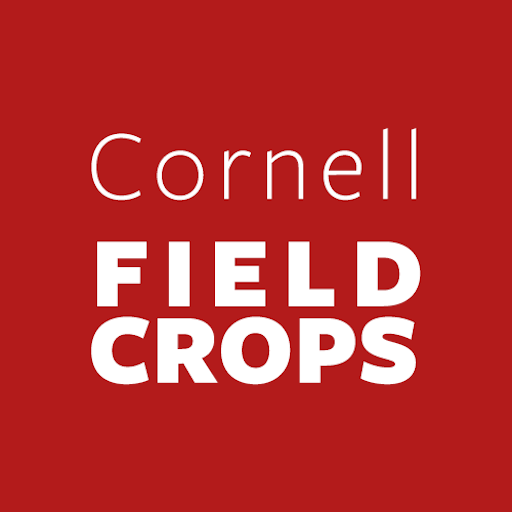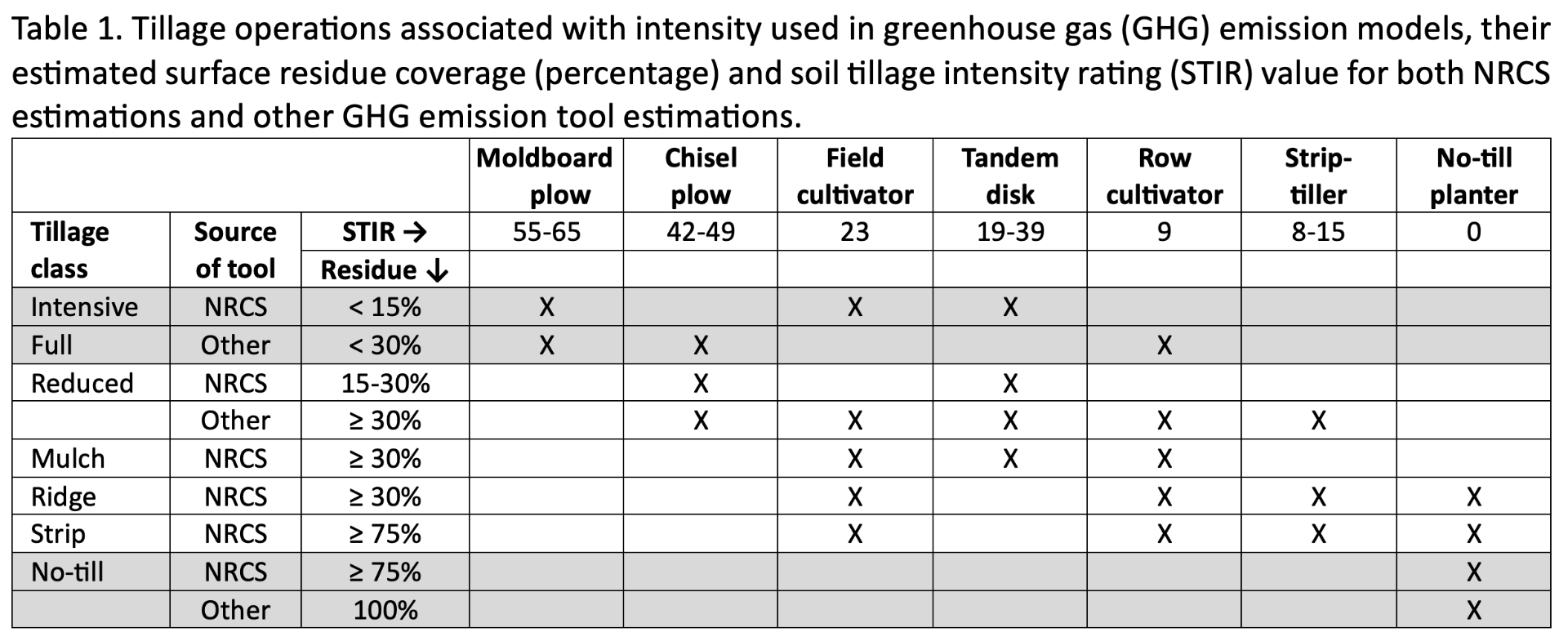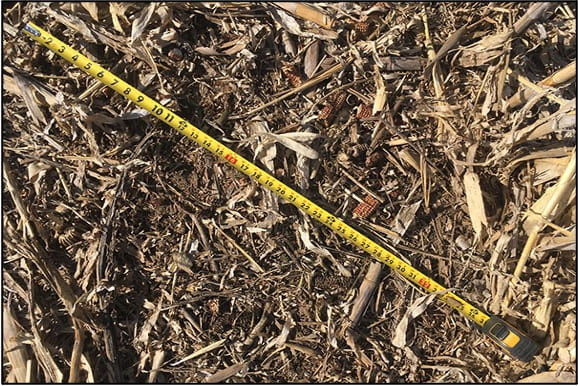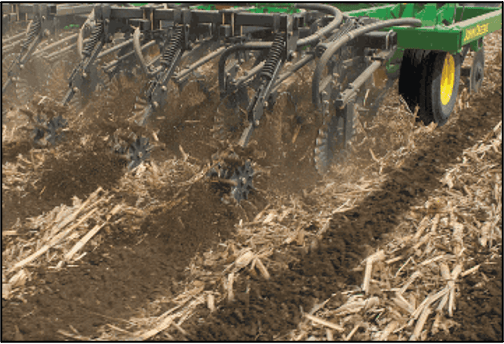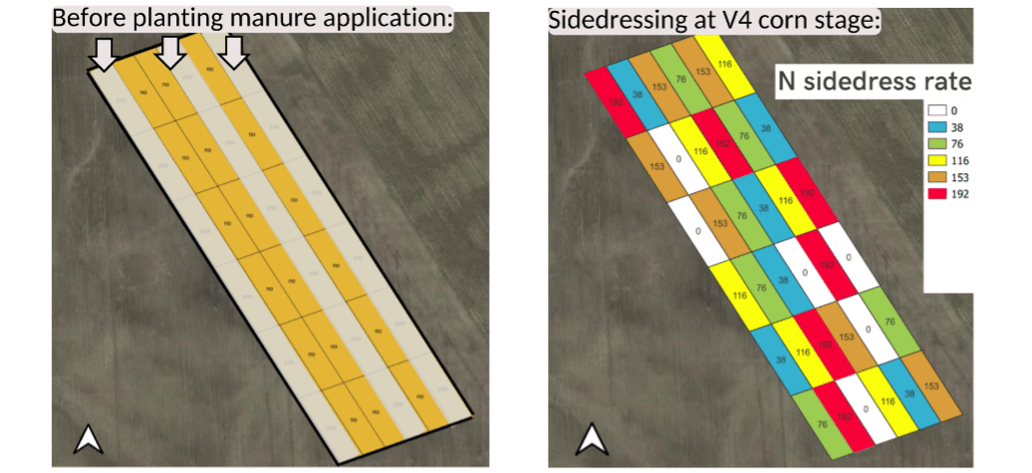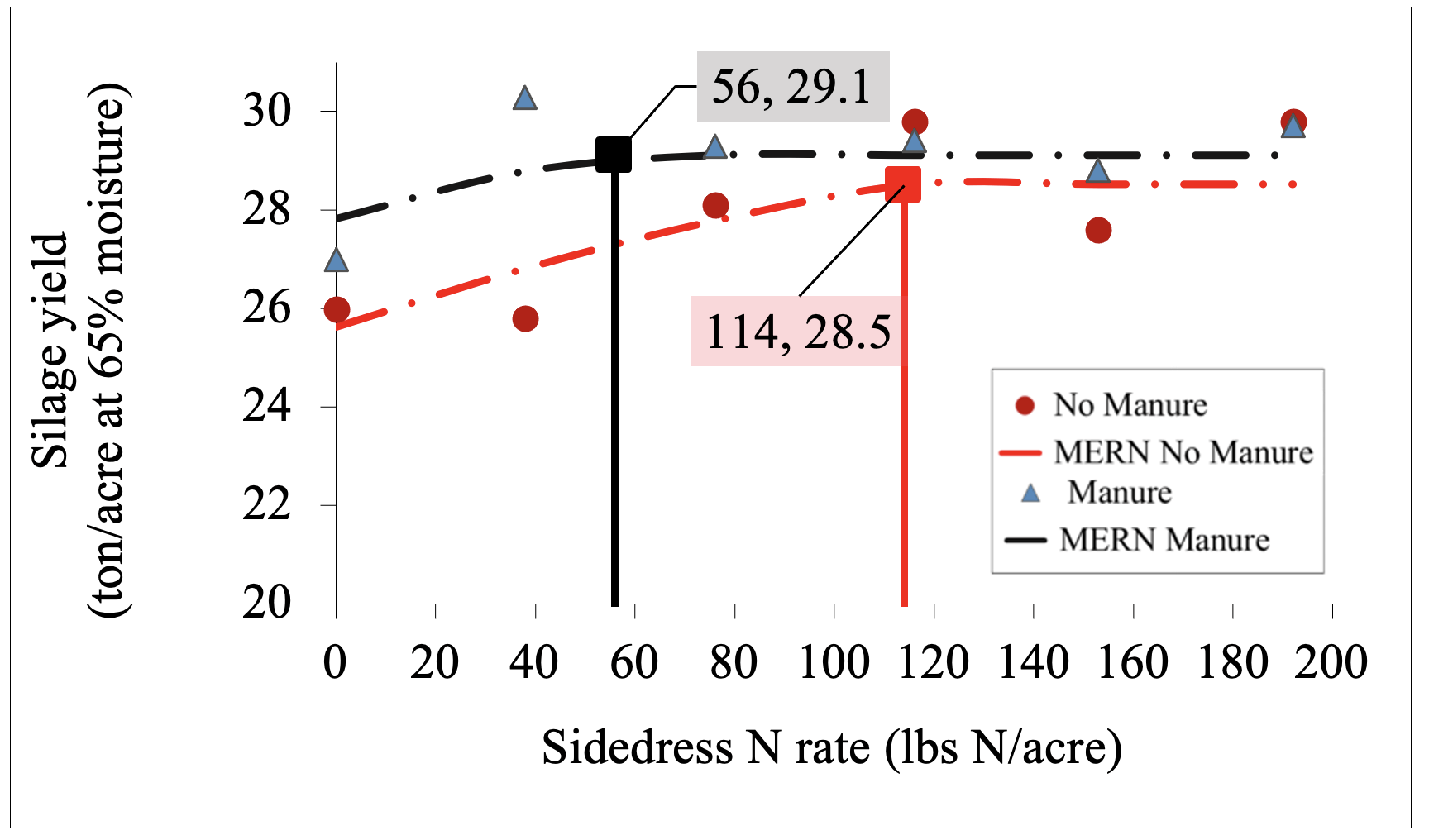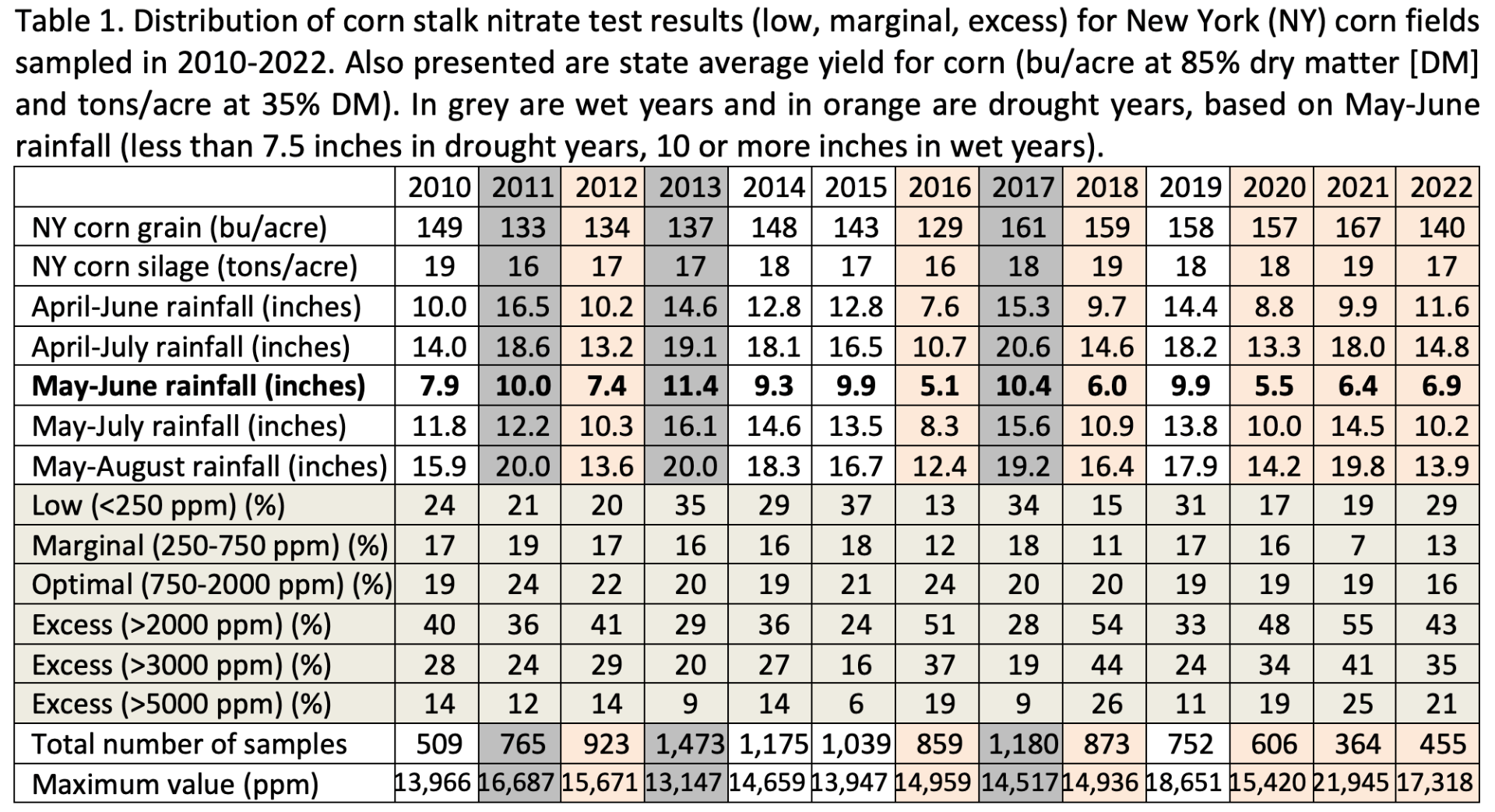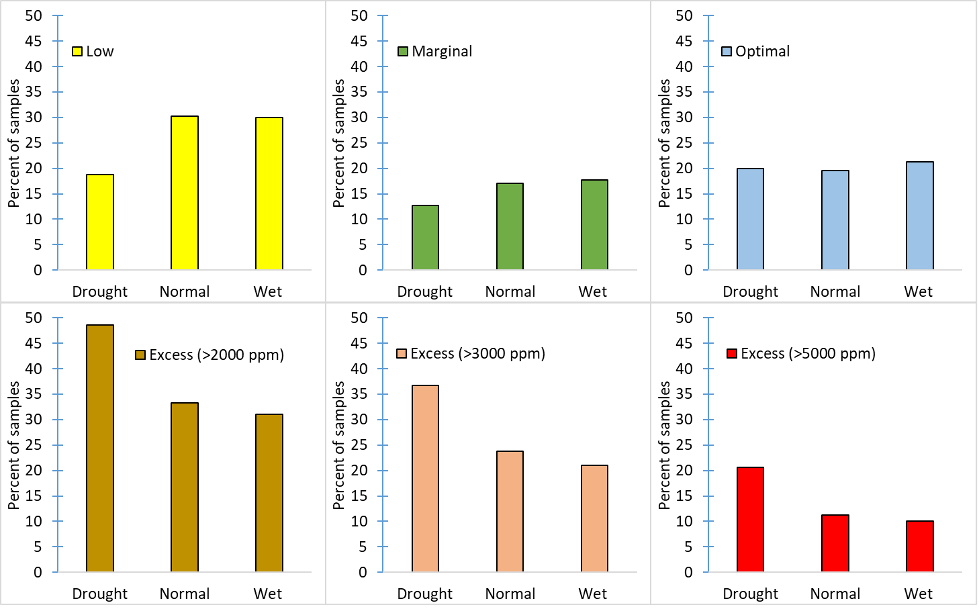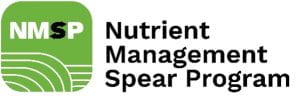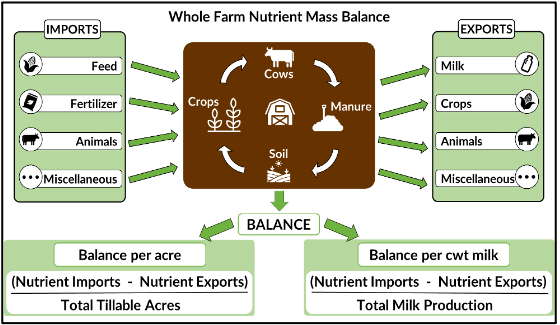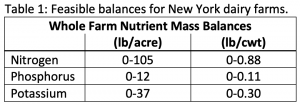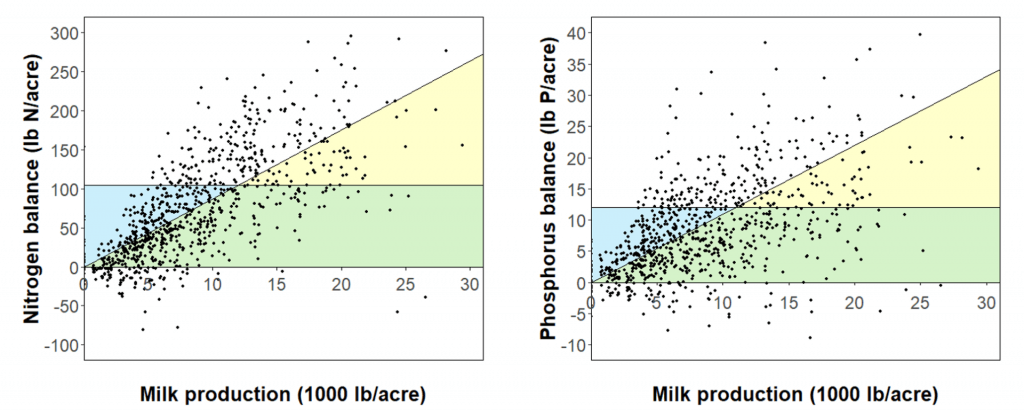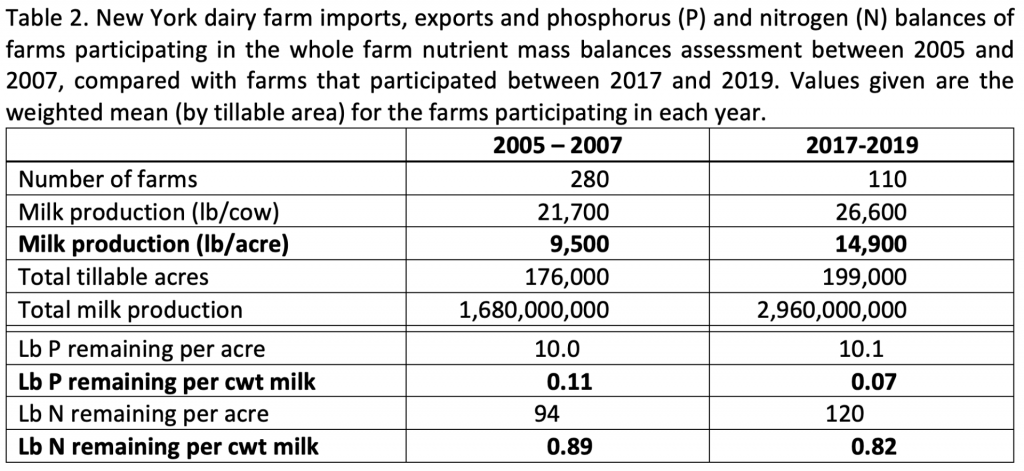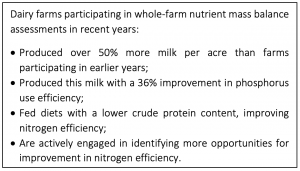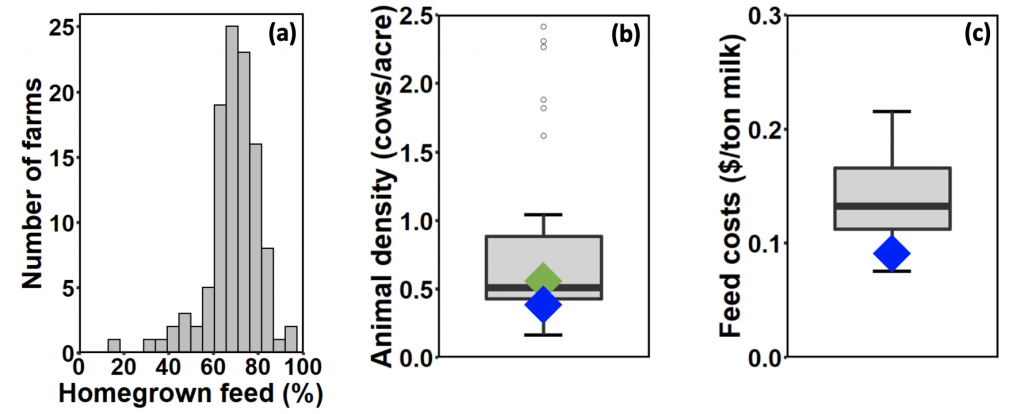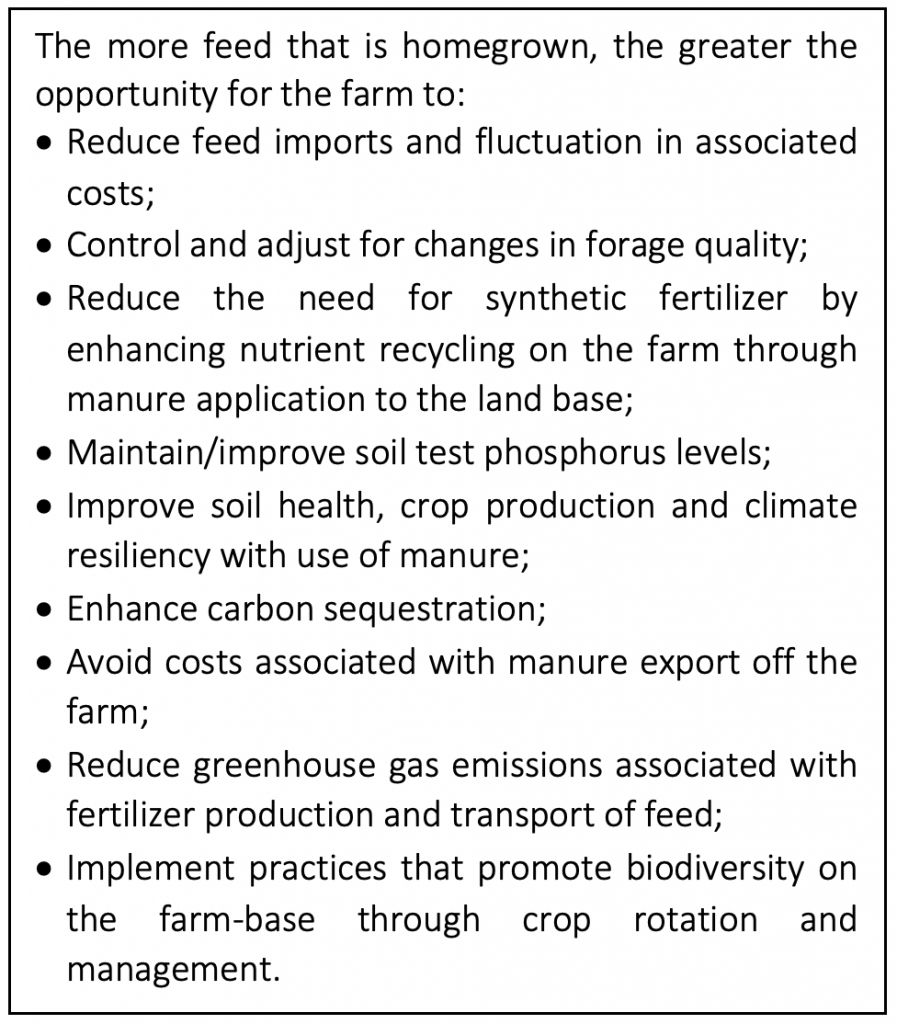Carly Bass1,7, Kirsten Workman2,3,7, Greg Albrecht4, Ron Bush4, Brendan Jordan4, Dale Gates5, Josh Hornesky5, Sara Latessa6, Kristan Reed7, Quirine M. Ketterings3,7
1Masters of Professional Studies in Animal Science, 2PRO-DAIRY, 3Nutrient Management Spear Program (NMSP), 4New York State Department of Agriculture and Markets (NYSAGM), 5United States Department of Agriculture Natural Resources Conservation Service (USDA-NRCS), 6New York State Department of Environmental Conservation (NYSDEC), and 7Department of Animal Science, Cornell University
Introduction
Farms that have more than 300 mature dairy cows (or an equivalent in other livestock animals) are required to operate under the New York State Pollutant Discharge Elimination System (SPDES) General Permit for Concentrated Animal Feeding Operations (CAFOs). The permit dictates that the farms follow environmental conservation practices and meet state standards designed to maintain the highest quality of water possible by mitigating the risk of pollution to New York waters. As only a small portion of our population is involved in agricultural production, it is not always understood what farms in New York State are required to do to stay in compliance. This article highlights and addresses some of the most common misconceptions surrounding New York CAFO farms and the CAFO permit.
Misconception 1:
“New York’s permit is less strict than the federal permit”
New York works closely with federal agencies such as NRCS and the EPA to ensure their standards and permit satisfy or exceeds the federal requirements. New York takes the minimum guidelines set forth in the federal Clean Water Act (CWA) CAFO Rule and makes additional requirements for farms to follow within their Comprehensive Nutrient Management Plan (CNMP) to meet water quality and sustainability goals of the state. The following are examples where the New York CAFO permit is more environmentally protective, and thereby restrictive, than the federal CAFO rule.
- New York CAFOs must maintain no discharge from their production areas (farmsteads) through a 100-year, 24-hour storm compared to the federal no discharge standard which is for a 25-year, 24-hour storm.
- New York CAFOs must utilize an AEM Certified Planner, whereas no professional certification is required by the CWA CAFO Rule.
- New York CAFO permitted farms must follow an integrated system of NRCS Conservation Practice Standards for management of nutrients throughout their farmsteads and fields; such engineering and management standards are not required by the CWA CAFO Rule.
- Farms must sample soil for nutrient values every three years versus every five years.
- Farmer fields need to be planned and managed to conserve soil and reduce erosion, whereas this is not a CWA CAFO Rule.
- New York CAFO’s must develop and maintain facility specific winter and wet weather application procedures and identify low-risk fields to be used for winter application in the case of an emergency.
- New structural practices need to be designed considering future flood risk due to climate change.
- Farm staff must be present and monitor active waste transfers from the production area (farmstead) while material is being transferred.
- The NRCS-NY 590 Nutrient Management Standard and associated Land Grant University Guidelines require New York CAFOs to account for nitrogen already present on the farm (soil, manure, crop rotation credits, etc.) when developing spreading recommendations.
Misconception 2:
“Manure storages are not safe and impact drinking water”
Manure storages located and operated on New York CAFOs are required to be designed and constructed by a trained, State of New York licensed professional engineer to meet national standards (Natural Resources Conservation Practice Standard – NY 313). The NRCS-NY 313 Standard requires that manure storages are designed, built, and operated to fully contain manure nutrients and any direct precipitation for future application to crops as fertilizer while remaining isolated and protected from ground- and surface waters. These standards require geological investigations, prior to the design, to properly site these structures and ensure an appropriate liner is selected to minimize any risk of leaking. To date, there has been no evidence of a certified manure storage contributing to an impact to groundwater in New York. In addition to the groundwater protections outlined in the standards, there are measures to ensure and protect against these structures overtopping. The standards themselves require maximum fill markers to help ensure that safety volume requirements are maintained. The New York CAFO permit also requires the final as-built plans, certified by a professional engineer, be maintained on site; fill levels be monitored and recorded; and operation and maintenance measures outlined by the professional engineer be followed. Finally, no farm in New York is allowed to impact the water resources of the state, no matter the size of the farm. Any impact to Waters of the State is considered a significant violation of the Environmental Conservation Law and is subject to substantial penalties and/or fines.
Misconception 3:
“Farmers can spread manure under any weather conditions”
All CAFO farmers are required to have a current Comprehensive Nutrient Management Plan (CNMP) developed by an AEM Certified Planner in accordance with the permit, NRCS standards, and guidelines. The CNMP must be updated annually and prescribes how much manure and fertilizer can be spread on each field, as well as the anticipated application method and timing. In addition to their individualized plans, the New York CAFO permit sets maximum single-application spreading rates. New York’s CAFO permit also contains specific requirements pertaining to winter and wet weather spreading, including a prohibition against spreading if the field is saturated or frozen-saturated.
New York does not have a calendar-based ban on winter spreading because calendar-based regulations do not take current weather and specific field conditions into account. Drivers of nutrient losses are based on specific field, soil, and weather conditions/forecasts. New York’s CAFOs must assess field conditions every time they spread and follow the specific guidance outlined in the “Revised winter and wet weather manure spreading guidelines to reduce water contamination risk”.
Misconception 4:
“New York regulations allow phosphorus to be applied to fields even when the crop does not need it”
Manure contains all 17 essential nutrients for plant growth and is a key to building soil health by providing organic matter and enhancing the soil ecosystem. Properly managed, use of manure can offset the need for purchased fertilizer, reducing the amount of imported nutrients onto farms and into a watershed. However, nutrients in manure aren’t necessarily present in the balance required by a specific crop grown on a specific field. Within a farm’s CNMP, the New York P-Index governs how much phosphorus can be applied to fields each year to ensure proper recycling of on-farm nutrients through crops and long-term, sustainable soil test levels for the benefit of water quality. In accordance with the New York P-Index, a farmer and AEM Certified Planner must assess the risk of phosphorus leaving the field. This needs to be done for all fields on the farm. Those assessments will determine how and how much manure may be applied and must be documented in the farms’ CNMP. Farmers implement beneficial management practices to further reduce P runoff risk to lower the New York P-Index rating for fields. Making the most of manure nutrients is critical for water quality, air quality, and crop production, and to reduce N and P imports into watersheds. Most soils in New York are currently deficient in phosphorus so proper phosphorus management is needed to maintain productive and healthy soils for food production.
Misconception 5:
“Farmers pay AEM Certified Planners, therefore plans are biased”
New York has strict rules for who can develop and update CNMPs. A farm’s CNMP needs to be written by a state-certified planner who has gone through extensive training, is required to keep certifications current through training sessions, and has signed a code of ethics. Such a certification is akin to other state certified professionals used across sectors, such as professional engineers, architects, accountants, etc. To become an AEM planner, an individual must first become a Certified Crop Adviser (CCA), which involves passing two exams (an international and a regional exam) and meeting further educational and experience requirements to demonstrate their knowledge in agronomy and environmental conservation in agriculture. The next step is satisfying participation in the state led CNMP Training. After completing these two steps, the individual’s first three CNMPs must be submitted to CNMP specialists at the New York State Department of Agriculture and Markets (NYSAGM) for review, revision, and acceptance. Once the three plans satisfy the CNMP requirements, the individual becomes an AEM Certified Planner. Certified planners must sustain their CCA status, maintain compliant work through ongoing quality assessments by NYSAGM staff, and satisfy 40 credit hours of continuing education every two years to maintain their certification. In addition to this rigorous certification and assessment process, the NYSDEC reviews CNMPs during regular CAFO inspections and pursues enforcement if deficiencies are identified.
Misconception 6:
“Only large dairy farms are regulated”
New York State laws and regulations require all animal feeding operations (AFOs) that meet certain animal thresholds, to obtain coverage under a State Pollutant Discharge Elimination System (SPDES) permit prior to operation. However, per Environmental Conservation Law Article 17, Title 5, Section 17-0501, no farm, regardless of size or permit coverage, is allowed to contribute to a water quality violation and impact New York’s water resources. New York also funds several programs that are available to all farms, including smaller AFOs. The AEM program, Dairy Advancement Program (DAP), and NRCS’s program help farms with conservation plan development (including CNMPs) and implementation of best management practices. To date, 13,500 practices on over 2,500 farms have been implemented through the AEM programs, the DAP has helped more than 300 non-CAFO farms develop CNMPs, and those NYS program accomplishments can be doubled when considering projects completed through USDA NRCS and the Farm Service Agency. These programs augment the substantial investment by farmers and ensure that farms of all types and scales have the resources to implement nutrient management practices on their farms to aid with environmental management. Roughly 1,000,000 acres of cropland are impacted annually in New York by nutrient management guidelines due to the various programs in place.
Additional Resources
- Bass, C., K. Workman, G. Albrecht, R. Bush, B. Jordan, D. Gates, J. Hornesky, S. Latessa, K. Reed, and Q.M. Ketterings (2023). Concentrated Animal Feeding Operation Regulations and Comprehensive Nutrient Management Planning in New York State. Cornell University, Ithaca NY. http://nmsp.cals.cornell.edu/publications/extension/CAFOCNMPNY2023.pdf.
- Natural Resources Conservation Service (NRCS) (2020). Conservation Practice Standard Nutrient Management 590. https://www.dec.ny.gov/docs/water_pdf/nrcsny590092020.pdf.
- New York State Department of Environmental Conservation (2022). ECL SPDES General Permit. https://www.dec.ny.gov/docs/water_pdf/cafopermitgp022001.pdf.
- New York State Department of Environmental Conservation. Concentrated Animal Feeding Operations. https://www.dec.ny.gov/permits/6285.html.
Acknowledgements
The information shared in this article comes from a larger extension document that outlines regulations and comprehensive nutrient management planning in New York State (see additional resources above). We thank the members of the Nutrient Management Spear Program advisory committees for their feedback on the larger document. For questions, contact Quirine M. Ketterings (qmk2@cornell.edu) or Kirsten Workman (kw566@cornell.edu).
